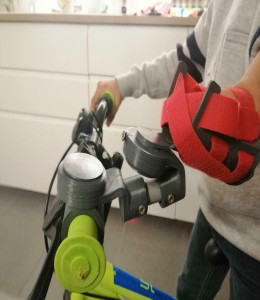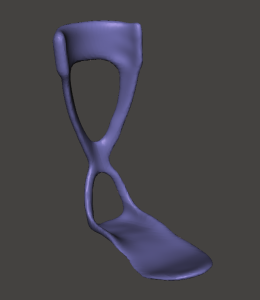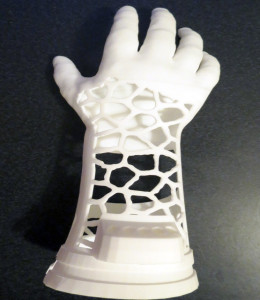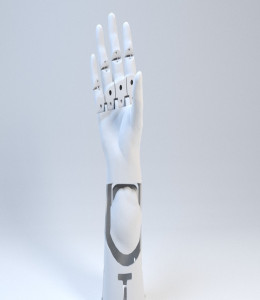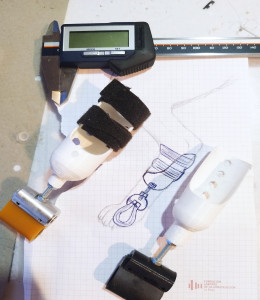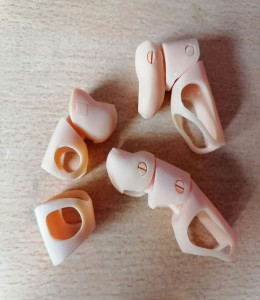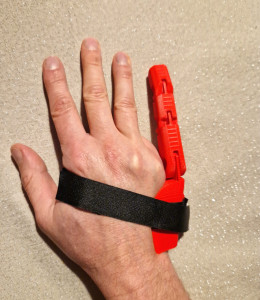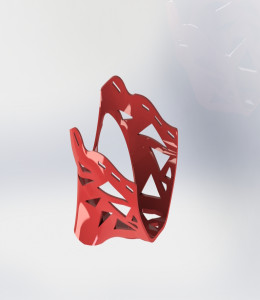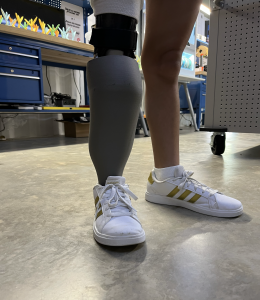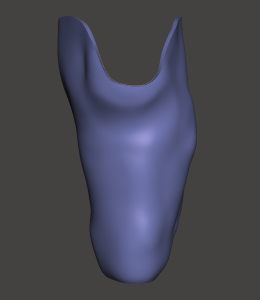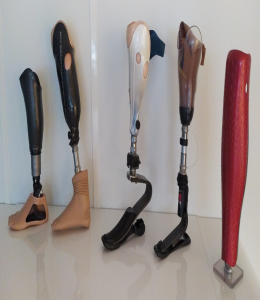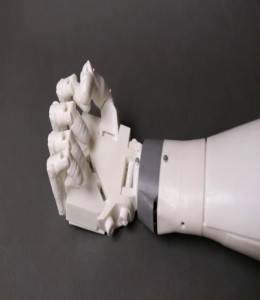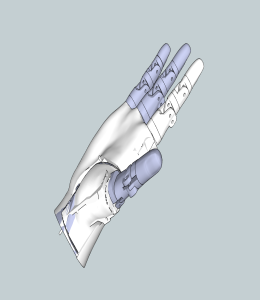Details about BIKE AID PROSTHESIS (WITHOUT HAND OR ARM)
The Bike Aid Prosthesis is a specialized prosthetic device designed for individuals who have experienced limb loss, specifically tailored for those who enjoy cycling. This innovative prosthesis enables users to comfortably and efficiently operate a bicycle without the use of a hand or arm, enhancing mobility and independence.
Details about AFO - ORTHÈSE CHEVILLE-PIED
The Ankle-Foot Orthosis (AFO), known in French as "Orthèse Cheville-Pied," is a medical device designed to support and stabilize the ankle and foot. It is commonly used to assist individuals with conditions that affect lower limb mobility and function, such as drop foot, muscle weakness, or neurological disorders.
Details about AFO - ORTHÈSE CHEVILLE-PIED - 2
The AFO - Orthèse Cheville-Pied, or Ankle-Foot Orthosis, is a specialized orthopedic device designed to support the ankle and foot. It is particularly beneficial for individuals experiencing mobility challenges due to neurological or musculoskeletal conditions. The orthosis helps improve stability, alignment, and gait, promoting greater independence and safety in daily activities.
Details about BRAS D'HOLLIES
The Bras d'Hollies is a specialized orthotic device designed to support and immobilize the upper arm and shoulder area. This orthosis is often used in the treatment and rehabilitation of shoulder injuries, fractures, and conditions that require stabilization of the arm. The Bras d'Hollies provides essential support, reducing pain and aiding in the healing process.
Details about DREAM NOSE - IMPLANT NASAL UNIVERSEL - CSG & SEG
The Dream Nose Universal Nasal Implant is an advanced solution designed for aesthetic and reconstructive nasal procedures. It features both CSG (Cartilage Support Graft) and SEG (Silicone Endo Graft) components, providing versatile and customizable options for enhancing nasal structure, function, and appearance.
Details about MAIN DE HOLLIES
The Main de Hollies is a specialized orthopedic device designed to support and stabilize the hand and wrist. This orthosis is commonly used in the treatment and rehabilitation of injuries, fractures, and conditions affecting the hand and wrist. It provides necessary immobilization and support, helping to alleviate pain and promote healing.
Details about Prosthetic of the Future
The "Prosthetic of the Future" represents the cutting-edge of prosthetic technology, combining advanced materials, intelligent systems, and innovative design to enhance mobility, functionality, and quality of life for individuals with limb loss. This next-generation prosthesis is designed to offer unprecedented levels of comfort, customization, and integration with the human body.
Details about Prosthesis for Cats and Dogs
A prosthesis for cats and dogs is a specialized medical device designed to replace a missing limb or part of a limb, providing pets with improved mobility and quality of life. These prosthetic limbs are tailored to fit the unique anatomical structure of each animal, enabling them to move, play, and live more comfortably.
Details about PROTHESE MAIN (DROITE ET GAUCHE)
Hand prostheses are advanced devices designed to replace a missing hand, offering functionality, aesthetic appeal, and improved quality of life for individuals. Available for both right and left hands, these prostheses cater to a wide range of needs, from basic functional support to highly sophisticated bionic systems that mimic natural hand movements.
Details about Finger Protheisis
A finger prosthesis is a specialized device designed to replace one or more missing fingers, providing functional and aesthetic benefits. These prostheses are tailored to fit the individual's unique anatomy, helping restore the appearance and partial functionality of the hand, enhancing the user's quality of life.
Details about Little Finger Prosthesis
A little finger prosthesis is a specialized device designed to replace the missing little finger (pinky finger) on the hand. This prosthesis offers both aesthetic and functional benefits, helping individuals regain confidence and some degree of dexterity. It is particularly useful for tasks that require fine motor skills and the use of the little finger for grip and balance.
Details about Canine Frontal Prosthesis
A canine frontal prosthesis is a specialized device designed for dogs to replace or support parts of the skull or facial structure that may be missing or damaged due to injury, disease, or congenital conditions. This prosthesis aims to restore the normal appearance and function of the canine's face, improving both health and quality of life.
Details about Rotationplasty Leg Prosthesis Cover
A rotationplasty leg prosthesis cover is a specialized covering designed to aesthetically and functionally enhance the appearance of a prosthetic limb used by individuals who have undergone rotationplasty. Rotationplasty is a surgical procedure typically performed for bone cancer patients, where a portion of the limb is removed and the remaining part is rotated and reattached. This unique procedure often results in the foot being positioned where the knee would typically be, allowing the ankle to function as a knee joint.
Details about Below-Knee Prosthetic Socket
A below-knee prosthetic socket is a crucial component of a prosthesis designed for individuals who have undergone a transtibial amputation, which involves the removal of the leg below the knee. The socket serves as the interface between the user's residual limb and the prosthetic limb, providing support, comfort, and control.
Details about Left or right foot prosthesis for military amputees
Prostheses for military amputees are specialized devices designed to replace a missing limb and restore mobility and functionality. These prostheses can be tailored for either the left or right foot and are often built to endure the rigorous demands of military activities.
Details about Left_Hand_robot_InMoov
The InMoov Left Hand Robot is a part of the InMoov project, which is an open-source, 3D-printed humanoid robot designed by Gael Langevin. This robotic hand is highly articulated, mimicking the movement and dexterity of a human hand.
Details about InMoov finger prosthetic project
The InMoov Finger Prosthetic Project is an extension of the InMoov robotic platform, specifically focused on creating functional prosthetic fingers using 3D printing technology. This project aims to provide an accessible and customizable solution for individuals who have lost fingers, offering a cost-effective alternative to traditional prosthetic devices.
Details about Flexy-Hand
The Flexy-Hand is a 3D-printed prosthetic hand designed to provide an affordable and functional option for individuals with upper limb differences. It is part of a broader movement to create accessible prosthetic devices using 3D printing technology.
